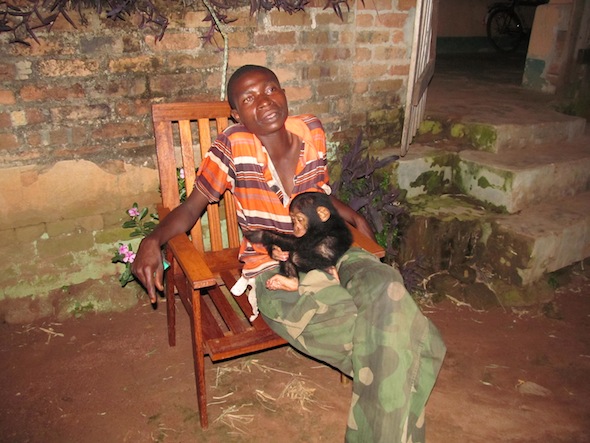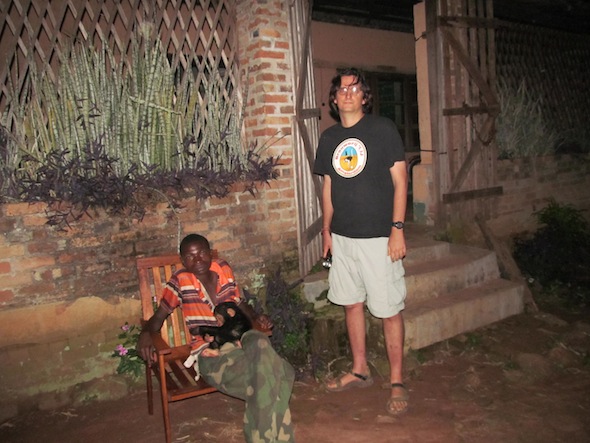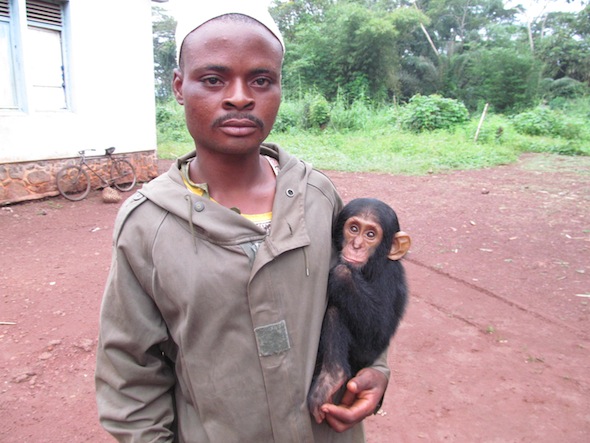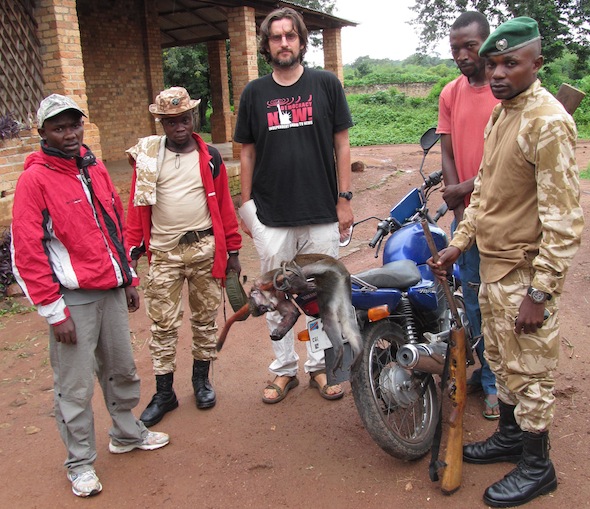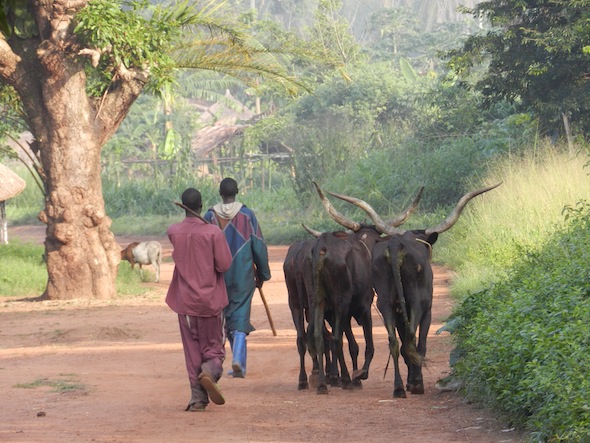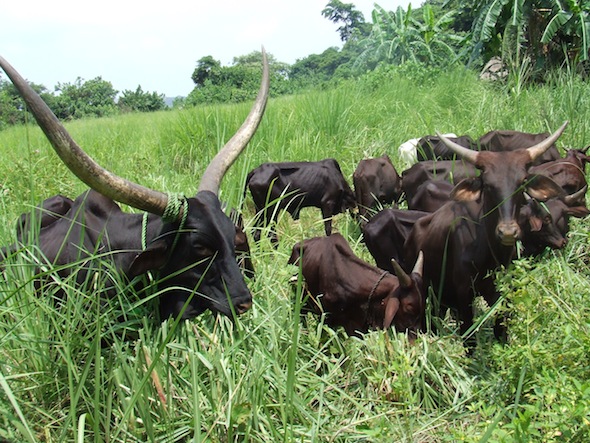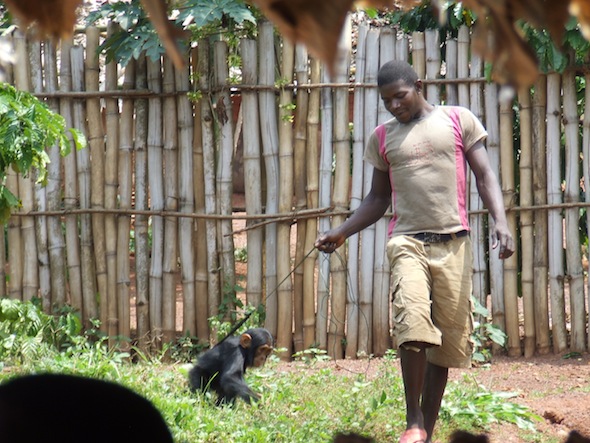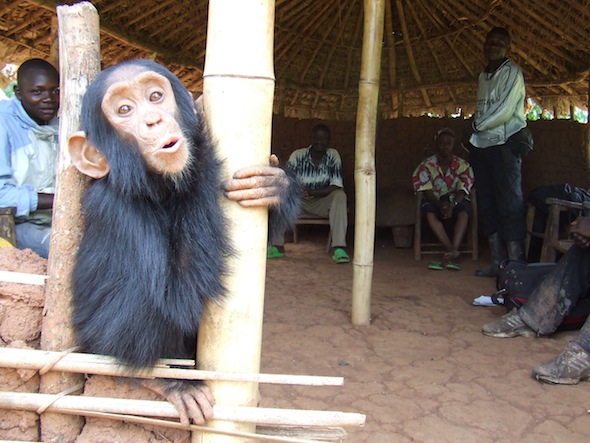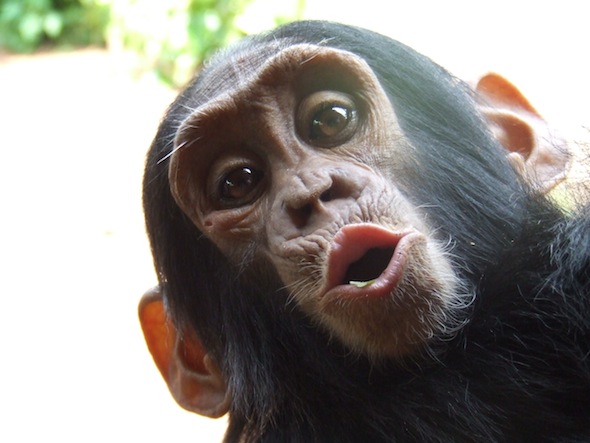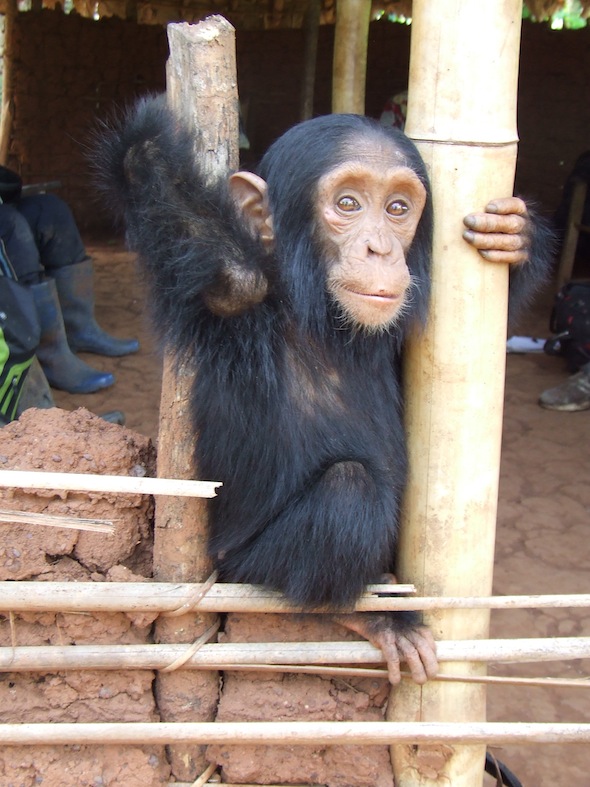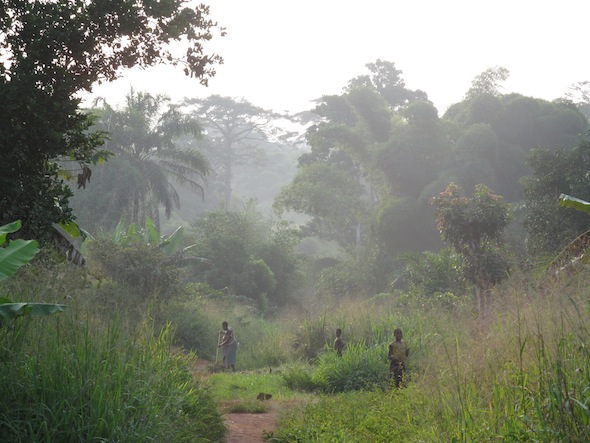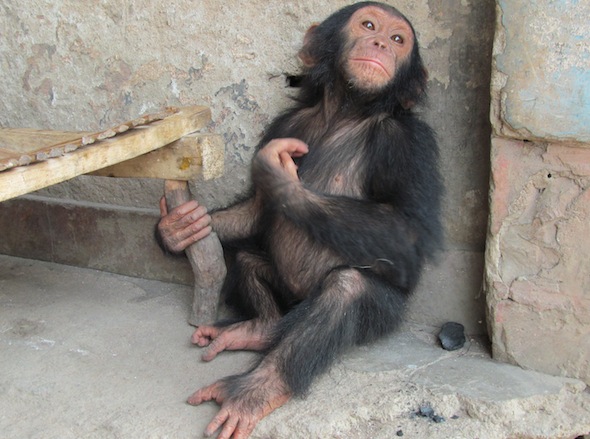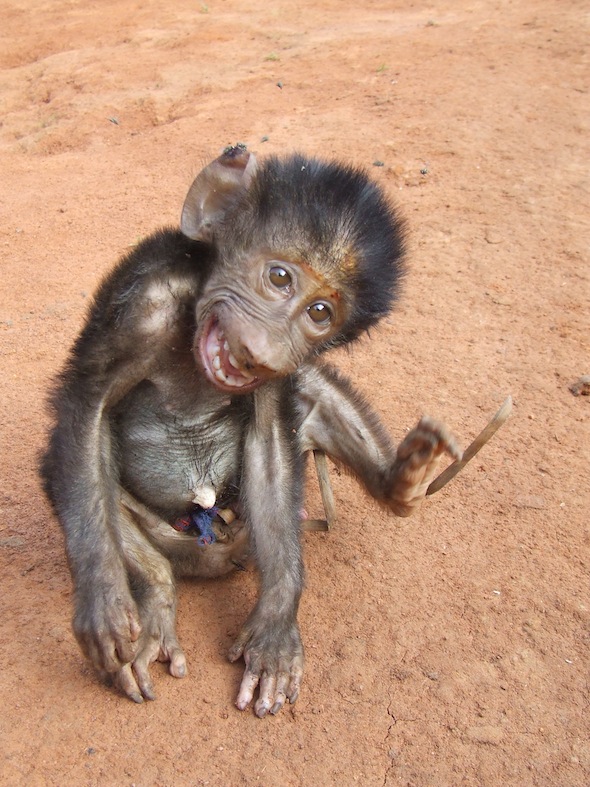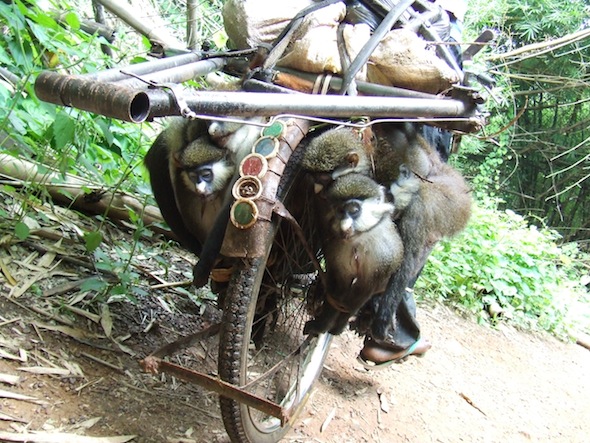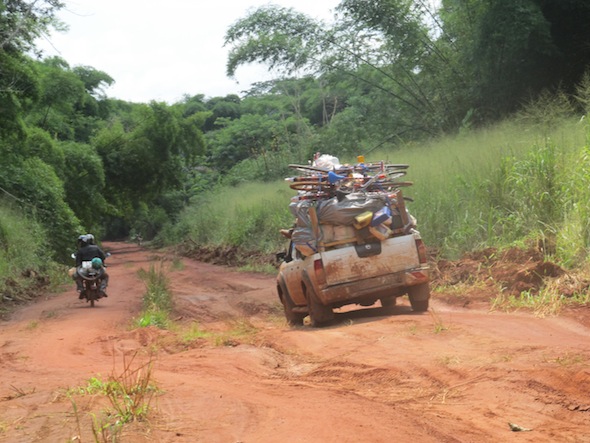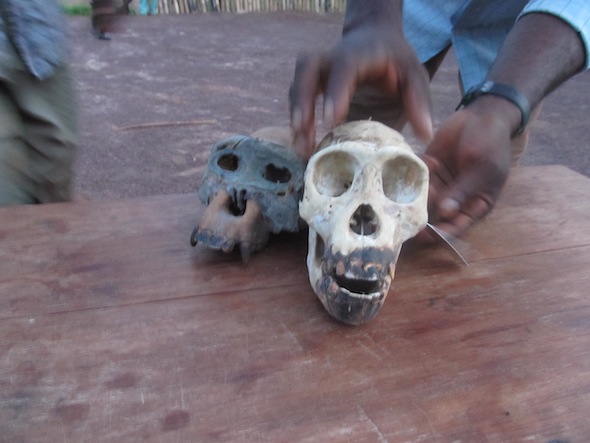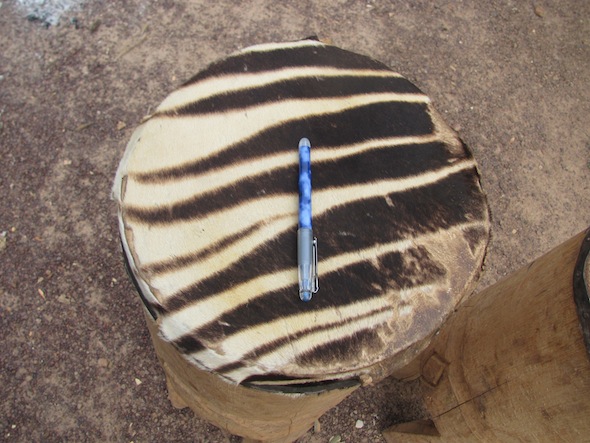Dr. Cleve Hicks, one of our guest bloggers, was featured last month with a series of posts called “Along the Bushmeat Highway” (Read Part 1, Part 2, and Part 3). The story was from July of last year, and Cleve has given us some more recent follow-up information about the Bili forest area in the DRC. WARNING: some disturbing images included in this entry (the most graphic one is included as a link in its caption).
—
UPDATE – THE FARDC ‘PETTING ZOO’ AT BILI, OCTOBER 2012
The skinny young man dressed in a mix of rags and military gear loomed out of the night like an apparition. He careened across our yard and nearly collapsed on top of Ephrem. Our evening banter was abruptly cut off as we rose from our chairs to confront the lurching, inebriated intruder. He was the youngest member in the squad of six Congolese soldiers stationed in a barracks up the hill from us in Bili. The soldier was so drunk that he could barely sit upright in the seat which we had offered him. At least on this occasion he had left his weapon back at the barracks. ‘I am a member of the Congolese military!’ he proclaimed in a slurred voice. ‘I am Congolese, and this is my pet!’ I looked in his lap and my heart sunk as I made out the dark shape clinging there: a baby chimpanzee, perhaps two years old, her eyes dull and glassy, pink tongue lolling out of her mouth. She periodically nodded off into a dazed slumber, and it looked as if the rumours that the troops were keeping her intoxicated with booze and dope were true.
A drunken young soldier with a baby chimpanzee at our project house. (Photo © Ephrem Mpaka of the Lukuru Wildlife Research Foundation).
This was the same orphan that our team had photographed the day before, gazing out from the arms of her owner with a look of befuddled hopelessness. I had sent Ephrem with a pair of Ecoguards over to the barracks of the FARDC (Forces Armées de la République Démocratique du Congo) to photograph the ‘petting zoo’ which we had been told the new squad leader was keeping there. In addition to this little female chimpanzee, named Congo, the military and their families were keeping three monkey orphans: a baboon tied to a short leash, an agile mangabey, and a red tailed guenon. The latter two primates scampered around the yard looking for food. After some initial tension between our guards and the military, things calmed down and the soldiers allowed Ephrem to photograph the primates. The soldiers explained that they had acquired the orphan chimpanzee from a shop in the town of Roa about 50 km southwest of Bili, as a ‘mascot’ for the troops. Ephrem explained to the men that it was both dangerous and immoral to keep primates in such a condition, and in the case of the chimpanzee, illegal. Later that evening we considered sending the guards to confiscate Congo, but in the end, decided against it. These military were heavily-armed, often drunk, and had already made threats against our project. Also, we had no place to send the poor orphan.
The orphan chimpanzee Congo kept by a soldier at the military barracks in Bili.
We were unsure why this young soldier had come to our house with the baby chimpanzee. Did he want to sell her to us? Intimidate us? Or was he just out-of-his-mind drunk? Maybe all three at once. After failing completely to penetrate his whiskey-soaked stupor with reason, we sent him stumbling on his way back to the barracks.
Two of the three chimpanzee orphans we had encountered on this trip, one in Bili and the other two en route, had been held by FARDC soldiers and officers (the third was held by a traditional chief at Lisala). The one we saw in the regional capital of Buta had been kept by the highest military authority in that town. Although the people of Bili certainly consumed monkeys and other wildlife, we had never seen any chimpanzee meat or orphans in the hands of the locals. The indigenous Azande still seemed to hunt only for local trade and consumption, but it was clearly in the vested interested of a number of outsiders to link up Bili to the huge and rapidly expanding commercial bushmeat network a hundred miles to the south. This was particularly the case for ivory. What a terrible example these military men and federal officials were setting – and not only in regards to conservation.
Later in the month these military men, in cahoots with the corrupt territorial administrator, began to shake down local merchants for money and merchandise, citing a law forbidding non-soldiers from wearing military-style clothing and mercilessly harassing anyone who happened to be wearing khaki shorts or cargo pants. They would then use this money to buy copious amounts of alcohol, which they would drink in public – fuelling more roadside shakedowns. They even did this to one of our motorbike drivers at our project base, forcing me to record the incident on film and threaten to report the culprits to the authorities. Only the threat of exposure caused them to back down. It was and is my hope that the local people, frequently victims of such aggression and thievery from the soldiers and administrators, would realize that we could serve as an ally against such forces of anarchy – and there were indications that this was happening.
In addition, we found evidence that powerful outsiders were ignoring the closed hunting season, a period of several months in which it is forbidden by national law to hunt. The purpose of this closed season is to allow key prey species to recover. On the road between our forest camp and Bili, in the middle of this closed season, our guards came upon a man shooting a red tailed guenon out of a tree. They confiscated his gun and the monkey carcass and brought them to us. It turned out the gun belonged to a highly-placed government official in Bili. That man paid us a visit on the same night demanding that we return his gun. We refused to comply. Later, in a public hearing, he tried to explain to us why it should be permissible for powerful men like him to hunt any time they wanted to. We encountered similar incomprehension of or disrespect for basic Congolese law from a number of regional officials throughout the course of our stay in Bili.
Our Ecoguards, Feruzi OPJ and Feruzi Yenga, confiscated this monkey and shotgun during the closed hunting season. The owner was a powerful governmental official.
In late October, on our way out of Bili to Buta, we drove past a herd of 45 Mbororo cattle being imported into the lushly forested region. We had seen only a few very skinny cattle at Bili, but here, further south in the heart of the forest, domesticated animals were arriving in increasing numbers – out with the local fauna, in with the cattle, pigs, goats, and chickens. Arriving at Buta, we stopped at the headquarters of the highest-ranking regional military official, a man whom our team had confirmed owned a baby chimpanzee. Despite this, he was widely known to be professional and respectful in his dealings with civilians. He listened courteously to our complaints about his troops in Bili and said he would work to get them transferred, and that he would also send out a message to his soldiers not to buy baby chimpanzees. At least he listened to us and appeared to take our complaints seriously. I am under no illusions that this will change anything much, for the orphan Congo or the people of Bili, but I am convinced from what we have seen that the Congolese military are a crucial link in the illicit trade of protected wildlife species, from chimpanzees to elephants. The commander told us that he and his team had been recently trained at their base by military advisors from the United States, and he proudly showed us a certificate on the wall to prove it. Might this arrangement between foreign governments and the FARDC present us with an opportunity to spread to the Congolese troops the urgent message that they should be protecting, not cruelly exploiting, DR Congo’s priceless and world-famous endangered species?
Domesticated livestock are rapidly replacing the local fauna (above, Bili, below, Road to Buta)
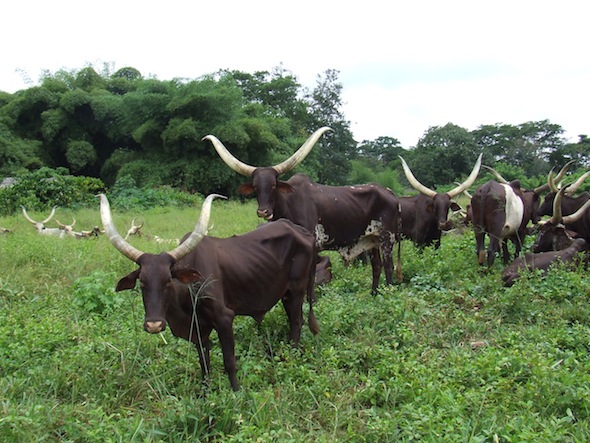
A majestic adult male chimpanzee in the Gangu Forest (photo © Ephrem Mpaka of Lukuru Wildlife Research Foundation). How can we keep him and his kind from ending up in the bushmeat markets? It may soon be too late for Gangu’s elephants (adult and juvenile mandibles found at a hunting camp).
Along the Bushmeat Highway: Part 1
Along the Bushmeat Highway: Part 2
Along the Bushmeat Highway: Part 3
This mission was made possible by the generous support of the Max Planck institute for Evolutionary Anthropology, The Lukuru Wildlife Research Foundation, The US Fish and Wildlife Service, l’ Institut Congolais pour la Conservation de la Nature, The Lucie Burgers Foundation, and The African Wildife Foundation.
